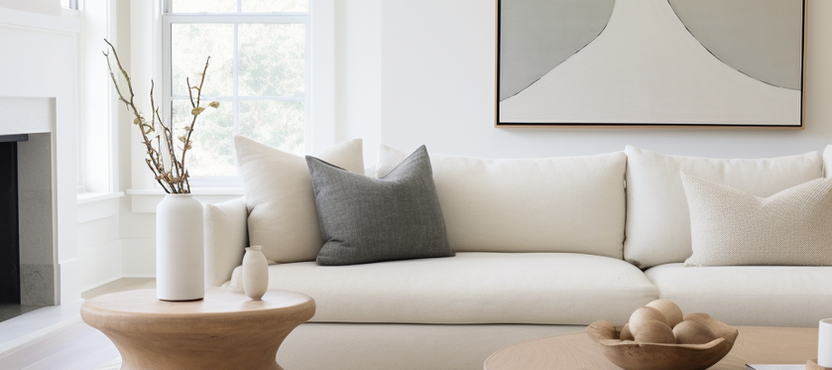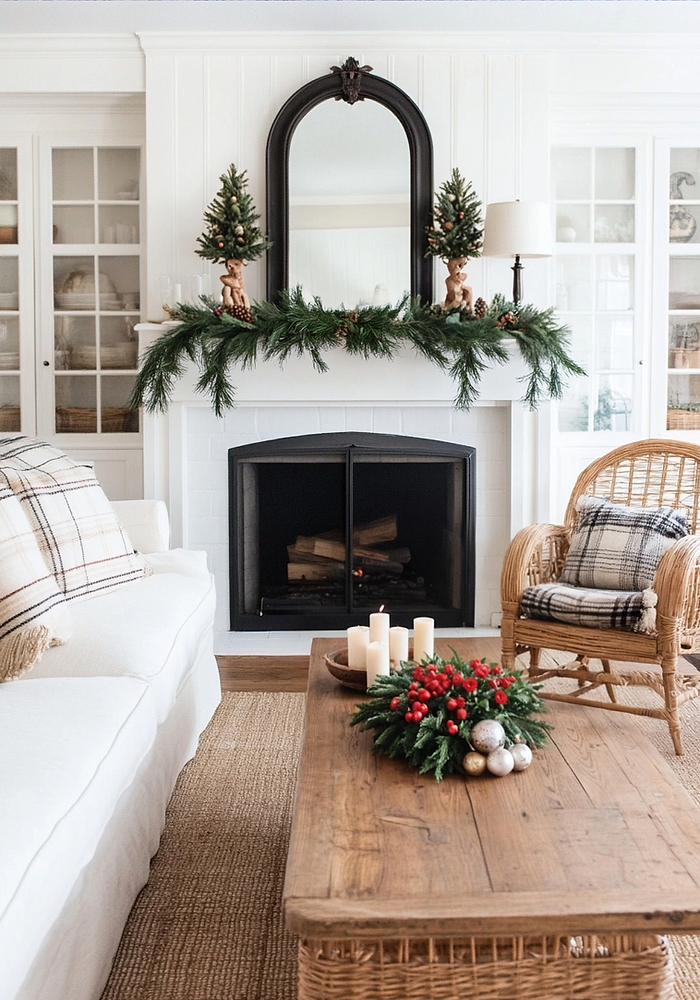Artisan Pottery DIY: The Simple Method That Makes Any Vase Look Handcrafted
- Beril Yilmaz

- 44 minutes ago
- 5 min read
Artisan pottery has taken over design feeds for a reason. These sculptural pieces do more than sit on a shelf — they add shape, height, and character to a room in a way store-bought décor rarely can. The only issue? Studio ceramics aren’t exactly budget-friendly. And if you want a few pieces for a console, bookshelf, kitchen island or coffee table… the cost adds up quickly.
Enter the Artisan Pottery DIY trend — the internet’s favourite hack for turning thrift-store glass into something that looks straight out of a boutique pottery studio. It’s fast, surprisingly forgiving, and one of those projects that instantly changes the look and feel of your home.
This method has become a designer go-to for clients who want that “collected” aesthetic without the designer price tag. And yes — it actually works. Today, I’m breaking down the full process, including the exact steps, tools, finishes and tricks that create the ceramic, handmade effect.
Let’s get your shelves looking like you spent the weekend wandering a pottery market.
At A Glance
• What you need for Artisan Pottery DIY
• How to prep glass vases correctly• How to apply primer and plaster
• How to create texture without clumps
• How to “age” your pottery using paint and dirt
• How to get a natural, handmade finish
• Designer tips for styling your finished pieces
1. Artisan Pottery DIY: Gather The Right Materials Before You Start

This project works best with glass or ceramic vases that have simple shapes — think tall cylinders, round bowls, shapely jars, or vintage thrift-store finds.
You’ll need:
Glass vessels
White spray primer
Plaster or plaster mix
A wide bristle brush or sponge
A small sample-size paint in ivory, beige or tan
A bowl of finely sifted backyard dirt
Optional: textured sprays, baking soda mixes, or stone-effect paints
Designer Tip: Look for vases with strong silhouettes. Sculpture matters just as much as finish.
YOU MAY LIKE
2. Artisan Pottery DIY: Clean, Dry And Fully Prep Your Vessels

Any dust, stickers or residue will show through your plaster — so start with the most basic but essential step: clean and dry thoroughly.
Once clean, spray the entire vase with primer. Don’t skip this. Primer gives the plaster something to adhere to and prevents your finish from sliding off.
Designer Tip: Hold your primer 20–30 cm away to avoid drips. Light, even passes always win.
3. Artisan Pottery DIY: Apply Plaster For Texture And Shape

This is the foundation of your artisan look. Depending on the texture you want:
Use one coat for a subtle finish
Use two coats for a stronger “hand-built” look
Apply with a brush, sponge or even your hands — whatever gives you the finish you want.
Let it dry fully before moving on.
Designer Tip: Avoid brushing plaster too aggressively. Gentle passes create a more natural pottery texture.
If you want help choosing pottery shapes, shelf styling layouts or colours for your space, we can design a complete plan. Explore our interior and exterior design packages to create a home that feels intentional and clear.
4. Artisan Pottery DIY: Add Colour And “Age” Using Paint, Washes And Dirt

This is the step where your pottery stops looking like craft paint and starts looking handcrafted.
Here are three ways to get the look:
Technique 1: The Paint Wash
Mix your paint with water, brush lightly over the plaster, and let it settle into the texture.
Technique 2: The Dirt Wash
Yes — actual dirt.Mix water with finely ground dirt and brush it across the surface. Wipe away excess once dry.
Technique 3: The Layered Finish
Spray with textured paint → paint with beige → brush on dry dirt for an aged look.
This step is forgiving — experiment until it feels right.
Designer Tip: Rotate the vase as you work. Uneven tones make the pottery look real rather than painted.
5. Artisan Pottery DIY: Blend Layers For A Natural, Handmade Feel

The magic of artisan pottery is in the irregularity — the shifts in tone, the natural shadows, the variation in texture. To create this effect:
Apply small patches of slightly darker wash
Add a thin layer of dry dirt
Wipe some areas to lighten
Leave other areas untouched
You’re mimicking natural wear.
Designer Tip: Step back often. Pottery should look tonal from a distance and interesting up close.
6. Artisan Pottery DIY: Let Everything Cure And Dry Properly

Once your surface is complete, set your pottery aside and let it dry fully. Don’t rush this step — it determines the durability of your finish.
Designer Tip: Avoid heat sources while drying. Slow drying helps textures settle more naturally.
Whether you need help styling your shelves or creating a full home concept, our design process breaks everything down into clear, simple steps. Share your room photos, and we’ll create your personalised plan.
7. Artisan Pottery DIY: Style Your Finished Pieces Like A Designer

Now the fun part — bringing your pottery into the room.
Try placing your new pieces:
On open shelving
On a console behind your sofa
On a coffee table tray
In the kitchen with wooden spoons
On a bedside table with a small stem
On a dining table as a centrepiece
Designer Tip: Think in groups of three — tall, medium, and small. Vary shapes, not colours.
8. Artisan Pottery DIY: When To Go Neutral And When To Add Colour

A neutral palette often looks the most authentic, but you can introduce soft colour through:
Clay-toned paints
Charcoal washes
Muted greens
Subtle is always more believable.
Designer Tip: Stick to earth-based tones. Bright colours can make the piece look artificially painted.
9. Artisan Pottery DIY: How To Fix Common Mistakes

If the dirt wash looks muddy:Add a light paint wash to soften.
If the plaster looks too chunky:Sand lightly and repaint.
If the colour looks flat:Layer with a tonal wash or dry brush technique.
Designer Tip: Mistakes are part of the process — every adjustment adds depth.
10. Artisan Pottery DIY: Protect Your Finish (Optional But Helpful)

If you plan to use these pieces functionally (e.g., holding water), seal the inside of the vase with a waterproof vessel insert and seal the outside with a matte protective spray.
Designer Tip: Always choose matte sealers — gloss breaks the illusion.
Conclusion

Artisan Pottery DIY is one of those rare projects that delivers huge visual impact with minimal cost. With a few thrifted vessels, plaster, paint and some backyard dirt, you can create pieces that look found, collected and handmade — the kind of pottery that normally costs far more.
If your shelves feel flat or your surfaces need dimension, this DIY is a simple, creative way to bring sculptural interest into your home without committing to high-end ceramics.
FAQ: Artisan Pottery DIY
1. What type of vase works best for Artisan Pottery DIY?
Simple glass or ceramic shapes with clean lines work best.
2. Do I need plaster for the Artisan Pottery DIY look?
Plaster creates the most realistic texture, but textured sprays also work.
3. Why use dirt in the Artisan Pottery DIY method?
It adds natural tone variation and creates an authentic aged finish.
4. How long should I let my DIY pottery dry?
At least 24 hours — longer if the plaster was applied thickly.
If you’d like help styling your home — including where to place your artisan pottery, how to choose the right shapes, or how to design a full room around your pieces — take our BY Design And Viz Style Quiz and discover your tailored design direction.
Author Bio
As the founder of BY Design And Viz, I help homeowners bring clarity and creativity to their spaces with simple, effective design choices. From material palettes to styling details, my goal is to create homes that feel intentional, lived-in and beautifully personal.




































